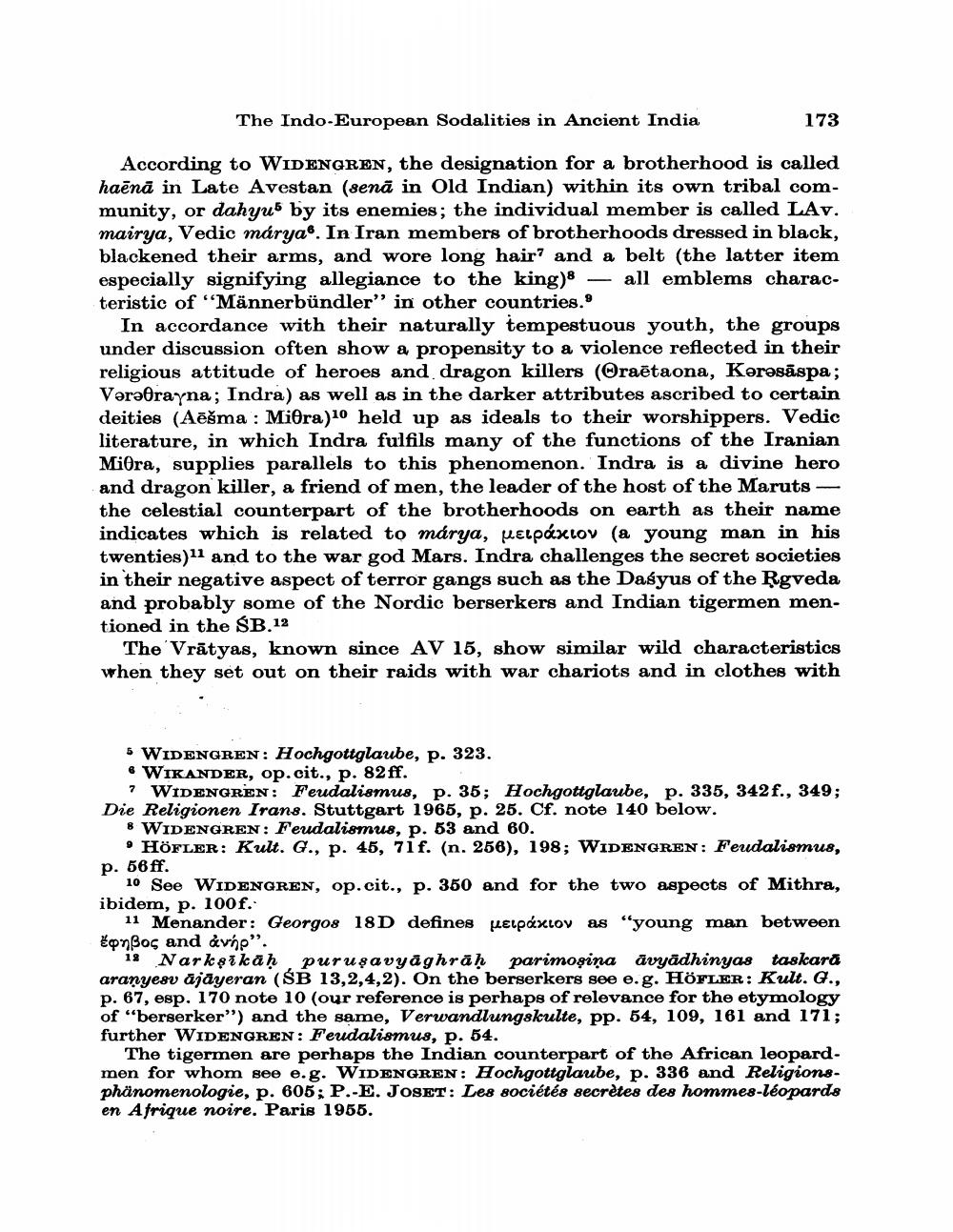Book Title: Indo European Sodalities In Ancient India Author(s): W B Bollee Publisher: W B Bollee View full book textPage 2
________________ The Indo-European Sodalities in Ancient India 173 According to WIDENGREN, the designation for a brotherhood is called haēnā in Late Avestan (senā in Old Indian) within its own tribal community, or dahyu by its enemies; the individual member is called LAV. mairya, Vedic márya. In Iran members of brotherhoods dressed in black, blackened their arms, and wore long hair and a belt (the latter item especially signifying allegiance to the king) all emblems characteristic of "Männerbündler" in other countries. In accordance with their naturally tempestuous youth, the groups under discussion often show a propensity to a violence reflected in their religious attitude of heroes and dragon killers (Oraëtaona, Keresāspa; Vǝrǝorayna; Indra) as well as in the darker attributes ascribed to certain deities (Aēšma: Mira)10 held up as ideals to their worshippers. Vedic literature, in which Indra fulfils many of the functions of the Iranian Mitra, supplies parallels to this phenomenon. Indra is a divine hero and dragon killer, a friend of men, the leader of the host of the Marutsthe celestial counterpart of the brotherhoods on earth as their name indicates which is related to márya, peιрάxιov (a young man in his twenties) and to the war god Mars. Indra challenges the secret societies in their negative aspect of terror gangs such as the Dasyus of the Rgveda and probably some of the Nordic berserkers and Indian tigermen mentioned in the SB.12 The Vrätyas, known since AV 15, show similar wild characteristics when they set out on their raids with war chariots and in clothes with 5 WIDENGREN: Hochgottglaube, p. 323. WIKANDER, op. cit., p. 82ff. 7 WIDENGREN: Feudalismus, p. 35; Hochgottglaube, p. 335, 342f., 349; Die Religionen Irans. Stuttgart 1965, p. 25. Cf. note 140 below. 8 WIDENGREN: Feudalismus, p. 53 and 60. • HÖFLER: Kult. G., p. 45, 71f. (n. 256), 198; WIDENGREN: Feudalismus, p. 56ff. 10 See WIDENGREN, op. cit., p. 350 and for the two aspects of Mithra, ibidem, p. 100f. 11 Menander: Georgos 18D defines uɛtpάxtov as "young man between ἔφηβος and ἀνήρ". 12 Narkṣikaḥ, puruṣavyāghrāḥ parimoṣiņa āvyādhinyas taskarā aranyesv ājāyeran (SB 13,2,4,2). On the berserkers see e. g. HÖFLER: Kult. G., p. 67, esp. 170 note 10 (our reference is perhaps of relevance for the etymology of "berserker") and the same, Verwandlungskulte, pp. 54, 109, 161 and 171; further WIDENGREN: Feudalismus, p. 54. The tigermen are perhaps the Indian counterpart of the African leopardmen for whom see e.g. WIDENGREN: Hochgottglaube, p. 336 and Religionsphänomenologie, p. 605; P.-E. JOSET: Les sociétés secrètes des hommes-léopards en Afrique noire. Paris 1955.Page Navigation
1 2 3 4 5 6 7 8 9 10 11 12 13 14 15 16 17 18 19 20
